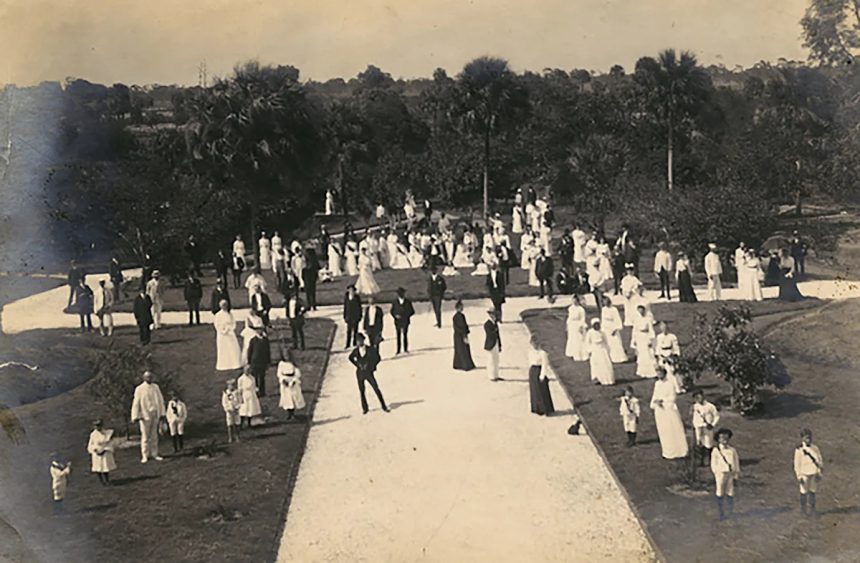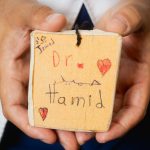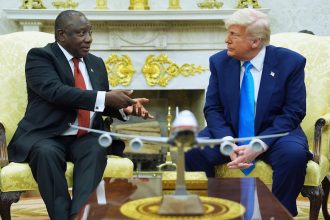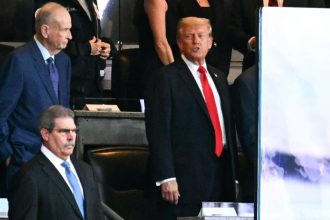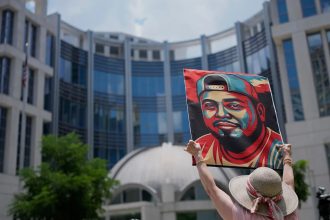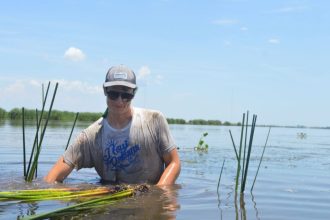Note: The following contains excerpts from a July 7, 2016, article in The News-Press entitled “Who put the Koresh in Koreshan? These Estero pioneers did” by Amy Bennett Williams.
These communal-living, bushwhacking, orchestra-loving utopians came to Estero from Chicago in the late 1800s to build the “New Jerusalem.” They never realized their dream, but they did leave behind more than a dozen buildings, hundreds of acres of land and an extensive archive.
The remnants of their core settlement are showcased at Estero’s Koreshan State Historic Site, now a Florida park.
As for the name Koresh, it was a Hebrew version of leader Teed’s first name, Cyrus. He assumed it to associate himself with Cyrus the Great, a Persian king called “shepherd” in the Bible. Cyrus ended the Jews’ exile in Babylon and led them back to Jerusalem – in Teed’s case, a modern version of that holy city.
New York-born and Baptist-bred, Teed worked as a doctor in the Civil War. In 1859, he married his second cousin, Fidelia M. Rowe. They had a son, Douglas Arthur (who painted many of the treasures in the site’s Art Hall) and settled in Utica, N.Y., where Teed dabbled in metaphysics and alchemy. He was working in his lab late one night in 1869, trying to turn lead into gold, when he had a life-changing experience he called his illumination.
A divine vision appeared to him, he said — a beautiful woman who revealed to him the secrets of the cosmos. As the Florida Memory Project explains it, the earth was not a convex sphere but instead a hollow, concave cell containing the entire universe, with the sun at its center.
Teed began sharing his new knowledge with patients, some of whom started calling him “the crazy doctor.”
Teed didn’t find many followers in upstate New York. It was only when he spoke at the National Association of Mental Sciences Convention in Chicago in 1886 that his message fell on receptive ears.
In 1888, the Koreshans moved into a home in Chicago where they lived communally. By 1893, there were 123 registered Koreshans. Most were highly educated, cultured and accomplished people — and most of them were women.
That year, Teed and three other Koreshans started searching for a site to build the New Jerusalem, his sprawling earthly utopia. They came to Southwest Florida, where German homesteader Gustave Damkohler signed on and donated his 320-acre claim in Estero to them. During the next 11 years, the group moved to Estero and started to build. Eventually, they owned more than 5,000 acres in Estero and on Fort Myers Beach.
Along the banks of the Estero River, they built themselves an oasis of industry and civilization: A self-contained town complete with a sawmill, cement works, publishing house, bakery, industrial laundry, machine shop, general store, an art gallery, a symphony, an acting troupe, a plant nursery and more. Although they were a religious group, the Koreshans never built a church or a temple. For them, the very act of living was worship.
Portrait of Dr. Cyrus Reed Teed, founder of the Koreshan Universology.
Teed’s deviations from mainstream religion upset many of his tradition-minded neighbors. And the group’s relationship with the locals didn’t get much better when the Koreshans decided to incorporate Estero in 1904. Their plan was dazzlingly ambitious. Estero’s 110 square miles stretched from today’s Gladiolus Drive in south Fort Myers to a mile north of Bonita Beach Road in Bonita Springs and encompassed what’s now Lovers Key State Park and the Town of Fort Myers Beach, making it the largest city in Florida at the time.
“The new city is to be on the banks of the Estero River and bay, which will now become famed as the waters upon which will nestle one of the greatest cities of the continent,” The Fort Myers Press proclaimed on its front page, Aug. 4, 1904.
The next few fractious years were filled with front-page tussles, contested elections and public-meeting shouting matches. In 1906, Teed was attacked on a Fort Myers street by a name-calling, anti-Koreshan group. His health began to decline after that.

Wall hanging at the College of Life building, Estero, illustrating the hollow earth; photographed in 2008.
In 1907, the Florida Legislature officially dissolved Estero; it wasn’t incorporated again until 2014.
Teed died Dec. 22, 1908, at age 69, sending the group into a tailspin from which it never recovered. At first, many followers fully expected him to rise from the dead by Christmas, and they waited for his resurrection until the Lee County health department ordered his burial.
The settlement remained, but membership dwindled from a high of about 250 to 55 in 1930 to 10 in 1948.
Some members left to form new groups. Some stayed and tried to carry on. But the group got smaller every year until its last member, Hedwig Michel, died in 1982.
Before she did, she donated about 350 acres — land that contained almost all of the Koreshan buildings — to the state of Florida. It’s now the Koreshan State Historic Site.

Koreshan Unity president Hedwig Michel speaking during dedication at the Koreshan State Historic Site park in Estero. Photographed on April 3, 1963.

Close-up of Dr. Cyrus Reed Teed’s mausoleum at Fort Myers Beach on Estero Island.

Festival time at Koreshan Unity in Estero.
This article originally appeared on Fort Myers News-Press: Archives: Search for ‘New Jerusalem’ brought Koreshan Unity to Estero


